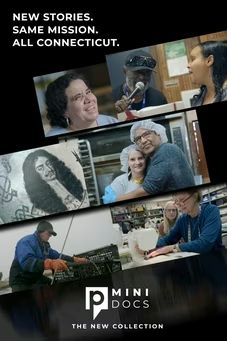
Apollo 13 - Working the Problem
3/24/2021 | 5m 13sVideo has Closed Captions
Hear what it was like to be part of the harrowing Apollo 13 mission
Hear what it was like to be part of the harrowing Apollo 13 mission from the late Glynn Lunney, who was part of mission control on that fateful day
Problems playing video? | Closed Captioning Feedback
Problems playing video? | Closed Captioning Feedback
Short Takes is a local public television program presented by WVIA

Apollo 13 - Working the Problem
3/24/2021 | 5m 13sVideo has Closed Captions
Hear what it was like to be part of the harrowing Apollo 13 mission from the late Glynn Lunney, who was part of mission control on that fateful day
Problems playing video? | Closed Captioning Feedback
How to Watch Short Takes
Short Takes is available to stream on pbs.org and the free PBS App, available on iPhone, Apple TV, Android TV, Android smartphones, Amazon Fire TV, Amazon Fire Tablet, Roku, Samsung Smart TV, and Vizio.
Providing Support for PBS.org
Learn Moreabout PBS online sponsorship(gentle music) - Apollo 13.
It was going fine.
It was like a lot of the other flights.
We were out on the coast to the moon.
We had 50 hours on the clock and that is usually a nice, quiet time.
The crew takes that time to read up on their flight plans.
They already know them in heart but to get their mind into it so that they are focusing completely on what they're gonna be faced with here in a couple of days or however long they are from the moon.
The crew made a report that there's a loud bang and we didn't quite know what that was.
They were telling us that there was a serious problem with the vehicle.
I was in the control center sitting next to Gene Kranz, who's getting to the end of his shift.
And other guys were around the flight director console too.
So he started to troubleshoot this command service module.
The pressure and the tanks, the two tanks that are used for providing electricity through the fuel cell system and then for providing breathing air, the tanks were going down in pressure, both of them.
We could not fly, continue to fly.
We had a problem of mission success.
We really had a problem of crew safety.
We were losing the life support system from the spacecraft and we were way in the hell out in space.
We were about 3/5 of the way to the moon.
How the hell are we gonna get home?
There was a emotional wave of what to dos in the form of turn around and come back.
People had to turn around and come back idea in their head.
The only problem is you couldn't do that where we were almost in fact, almost to the moon and if we tried to come all the way back from that spot, we would have had a gigantic amount of propulsion to use more than we had on board the ship.
So we didn't want to try to put the brakes on and turn around and come back because we didn't have enough fuel to do that.
So we had to devise a different return scheme and the first decision was we can't come back.
So we're gonna go around the moon.
We started working on that and fairly quickly, it led to some other things, all constrained by the fact that we only have so much power.
So it's not like we have an unlimited amount of power.
So we had to marshal the things that we did so that what they did was at most effective in terms of getting the crew back home, getting the ship back home.
One of my old friend was Tom Stafford, who was a guy that was a commander for a number of the flights.
He came up and sat down beside me and he and I talked it over and he wasn't even on console duty.
He was just like everybody else.
They were there, even if they're not on shift but maybe they know something, some idea that can be used.
I decided that we would have to go around the moon and then did a big burn to accelerate back towards the earth, hit it with a big return post to get the ship back, not as fast as we possibly could, but get it back to the landing point that we were planning on.
Okay, and how are we gonna do that?
What are we gonna use?
How fast are we gonna come back?
So it was a time when people had to get their head turned on and that took a while.
I just went through this quickly, but a lot of that took time to frame up and to resolve and then having it ready to go when we got around the corner and then having a plan for how much propulsion are we gonna use that won't compromise the time that we have to get back to the earth's surface?
We had to put all that together and that was the decision that got us to come back home in a good trajectory, safe trajectory and in a reasonably quick one.
It was celebrated around the world.
It was one of these things that brought people together in a positive way.
(gentle music)
Support for PBS provided by:
Short Takes is a local public television program presented by WVIA















